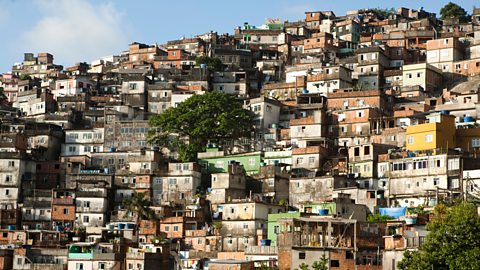Life in Brazil's favelas

Rio de Janeiro is one of Brazil's largest settlements with a population of approximately 6.7 million people. The rapid growth of Rio de Janeiro's population has led to severe crowding and a shortage of housing. This has led to the growth of shanty towns, which are called favelas in Brazil.
Rocinha is the largest favela in Brazil. It is located in the southern zone of the city. It is built on a steep hillside overlooking the city, just one km from the beach. According to a census in 2010, it is home to 70, 000 people. Unofficial estimates suggest a much bigger population of up to 180, 000 people.
Issues in the favelas
In Rio, more than 1.2 million people live in the favelas on less than £1 per day. The residents lack access to the most basic public services, such as health care, education, and space for recreation.
Infant mortality rates are high in favelas, 50 per 1000 compared to a national rate of 15 per 1000.
In 2011, life expectancy in Rio's favelas was found to be up to 13 years less than in the city's wealthier areas.
There are high incidences of malnutrition, diarrhoea and other diseases. Organised crime and gang violence are also common.
Unemployment rates are high (up to 50% in 2016) and many people work in the informal, poorly paid sector.
Many children have to work to support their families. A 1995 survey found that almost five million children in Brazil between the ages of 10 and 14 were working. 18% of children in Rocinha do not attend school.
Lack of education and low literacy levels mean that it is difficult to find better paid work.